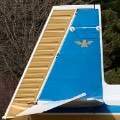-
Posts
2,830 -
Joined
-
Last visited
-
Days Won
9

Jerry 5TJ replied to toto's topic in Miscellaneous Aviation Talk

Jerry 5TJ replied to toto's topic in Miscellaneous Aviation Talk

Jerry 5TJ replied to toto's topic in Miscellaneous Aviation Talk

Jerry 5TJ replied to Huckster79's topic in Vintage Mooneys (pre-J models)

Jerry 5TJ replied to ilovecornfields's topic in Miscellaneous Aviation Talk

Jerry 5TJ replied to ilovecornfields's topic in Miscellaneous Aviation Talk

Jerry 5TJ replied to ilovecornfields's topic in Miscellaneous Aviation Talk

Jerry 5TJ replied to ilovecornfields's topic in Miscellaneous Aviation Talk

Jerry 5TJ replied to ilovecornfields's topic in Miscellaneous Aviation Talk

Jerry 5TJ replied to ilovecornfields's topic in Miscellaneous Aviation Talk

Jerry 5TJ replied to ilovecornfields's topic in Miscellaneous Aviation Talk

Jerry 5TJ replied to ilovecornfields's topic in Miscellaneous Aviation Talk
We have placed cookies on your device to help make this website better. You can adjust your cookie settings, otherwise we'll assume you're okay to continue.